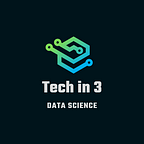What is Big Data?
“The world is one big data problem.” -Andrew McAfee
What is Big Data?
Big data is a term that describes the large volume of data — both structured and unstructured. But it is not the amount of data that is important. It’s what organizations do with the data that matters.
The term “big data” refers to data that is so large, fast, or complex that it’s difficult or impossible to process using traditional methods. The act of accessing and storing large amounts of information for analytics has been around for a long time. But the concept of big data gained momentum in the early 2000s.
Characteristics of Big Data
1) Volume:
Volume refers to the unimaginable amounts of information generated every second from social media, cell phones, cars, credit cards, M2M sensors, images, video, and whatnot. Facebook alone can generate about billion messages, 4.5 billion times that the “like” button is recorded, and over 350 million new posts are uploaded each day.
2) Variety:
Data comes in all types of formats — from structured, numeric data in traditional databases to unstructured text documents, emails, videos, audios, stock ticker data, and financial transactions.
3)Veracity:-
Veracity refers to the quality of the data. Because data comes from so many different sources, it’s difficult to link, match, cleanse, and transform data across systems. Such an example of this is data generated from Medical experiments or trials.
4)Value:
Value is actually the amount of valuable, reliable, and trustworthy data that needs to be stored, processed, analyzed to find insights.
5)Velocity:
Velocity is defined as at which speed the data is generated from the source. An example of Velocity in Big Data is Tweets on Twitter or posts on Facebook.
Applications of Big Data
Organizations from the different domains are investing in Big Data applications, for examining large data sets to uncover all hidden patterns, unknown correlations, market trends, customer preferences, and other useful business information.
1) Healthcare
Big data analytics have improved healthcare by providing personalized medicine and prescriptive analytics. Researchers are mining the data to see what treatments are more effective for particular conditions, identify patterns related to drug side effects.
By mapping healthcare data with geographical data sets, it’s possible to predict disease that will escalate in specific areas. Based on predictions, it’s easier to strategize diagnostics and plan for stocking serums and vaccines.
2)Cybersecurity & Intelligence
The federal government launched a cybersecurity research and development plan that relies on the ability to analyze large data sets in order to improve the security of U.S. computer networks.
The National Geospatial-Intelligence Agency is creating a “Map of the World” that can gather and analyze data from a wide variety of sources such as satellite and social media data.
3)Crime Prediction and Prevention
Police departments can leverage advanced, real-time analytics to provide actionable intelligence that can be used to understand criminal behavior, identify crime/incident patterns, and uncover location-based threats.
4)Weather Forecasting
The NOAA (National Oceanic and Atmospheric Administration) gathers data every minute of every day from land, sea, and space-based sensors. Daily NOAA uses Big Data to analyze and extract value from over 20 terabytes of data.
5)Traffic Optimization
Big Data helps in aggregating real-time traffic data gathered from road sensors, GPS devices, and video cameras. The potential traffic problems in dense areas can be prevented by adjusting public transportation routes in real-time.
